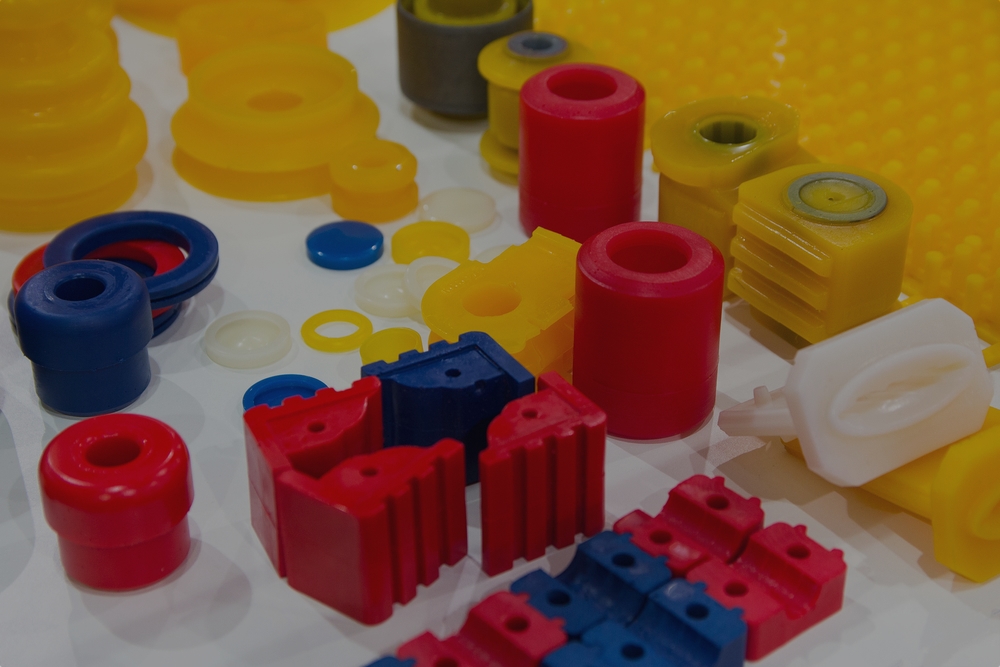

As a production method, urethane casting sits in stark contrast to the hard tooling of injection molding. Whereas injection molding requires expensive, laborious tooling, urethane casting makes use of flexible silicone molds, which allows manufacturers to produce high-quality, end-use parts with far shorter lead times and at lower costs. That’s why the process is commonly used for bridge tooling, low-volume production runs, rapid prototyping, fabricating joints, and manufacturing parts with fine details (such as raised lettering).
The urethane casting build process involves first creating a master pattern — essentially a replica (often 3D printed) of the final part. The pattern is then fully encased in liquid silicone and allowed to cure. The mold is cut into halves and the pattern removed. From there, the process can be repeated using the proper urethane casting resin.
Polyurethane casting materials are capable of providing performance characteristics comparable — if not superior — to the thermoplastics used in injection molding. However, as with other production methods, the process of casting high-quality parts that meet all performance requirements also requires that product teams follow design for manufacturability (DFM) best practices. Here are some of the most important guidelines for product teams to keep in mind:
Some degree of variation is inevitable in manufacturing (though teams should endeavor to account for as many of the variables as possible), and tolerances are the acceptable amount of dimensional variation between individual units. Cast urethane tolerances are typically around ± 0.015” or ± 0.003 per inch, whichever is greater. Tighter tolerances may be offered on a case-by-case basis.
In general, a shrinkage rate of +0.15% is typical. This is caused by the thermal expansion of the urethane casting material and how the flexible silicone mold warms in response.
Additionally, it’s important to note that while urethane cast parts take well to post-processing (though additional processes, such as polishing or custom finishing, can quickly drive up production costs), some design features like sharp corners or lettering may experience slight rounding in the cooling process, impacting the definition of finer details. That said, it is possible to add a finish to the master pattern that mimics an SPI finish or texture. You can also paint urethane cast parts to match Pantone colors, and certain color and pigments can be added directly to the casting materials, as well.
Parts produced with urethane casting should have a minimum wall thickness of 0.040” (1mm), though walls as thin as 0.020” (0.5mm) can be achieved for some small components. Larger parts generally require thicker walls in order to ensure the piece’s structural integrity.
Urethane casting does allow for parts with varying wall thicknesses or irregular geometries, but designing parts as such should be done only when strictly necessary. Maintaining a consistent thickness helps to minimize the potential for improper shrinkage and deformation during the curing process.
While undercuts can quickly complicate injection molding design, the flexible nature of the silicone molds used in urethane casting typically allows for parts to be removed easily and without damage.
The same is true for draft angles: they are a necessity for ejecting pieces from metal molds, but less essential for urethane-cast parts. That said, incorporating 3-5 degrees of draft into part design can significantly reduce strain on your mold and extend its life cycle.
Ribs add stability and strength, but it’s important to ensure that they are oriented so as to maximize the bending stiffness of the walls they support. As a general rule of thumb, the rib’s height should be no more than three times its width, and the width of the rib where it meets the part wall should be between 40-60% of the wall thickness. Lastly, to maximize the strength of the rib, all interior corners should have a fillet radius of at least 25% of the part’s wall thickness.
Bosses allow secure mating parts to be attached through the use of screws, pins, and other fasteners. As with ribs, the base radius should be about 25% of the part’s wall thickness, which has the added benefit in this case of helping to prevent the fastener from burning when it’s set into the boss.
Interior boss corners should use a 0.060” (1.5mm) fillet radius to minimize thickness and reduce the likelihood of sinks developing. Ensuring that bosses are no more than 60% of the nominal wall thickness also helps to minimize shrinkage.
The advantages of urethane casting — short lead times, low cost, and design and material flexibility, to name a few — only truly pay off if you adhere to design and manufacturing best practices. This means paying attention to variables like urethane casting material properties, general tolerances for rubber parts, and everything in between — which quickly becomes complicated without the assistance of an experienced manufacturing partner.
With our agile approach, we’re able to significantly shorten lead times and increase operational efficiency for product teams of all shapes and sizes. And at SyBridge, our business isn’t just based on manufacturing superior parts — we also work tirelessly to make sure that our production processes are as efficient as possible, even if that means using a combination of techniques to get the job done. Contact us today to learn more.
Forget typical cycle times. We're pushing the boundaries of conformal cooling. While traditional approaches deliver…
Forget typical cycle times. We're pushing the boundaries of conformal cooling. While traditional approaches deliver…
From left to right: Brayden Janak (apprentice); Logan Vifaquain (CNC machining, Programming and CMM); Ron…
SyBridge Technologies is proud to announce we have been awarded the 2023 General Motors Supplier…
Today, designers and engineers are accustomed to working with digital tools in their day-to-day jobs.…
Optimizing Your Injection Molding Process for Cost-Effective Manufacturing Excellence In today’s competitive landscape, manufacturers are…